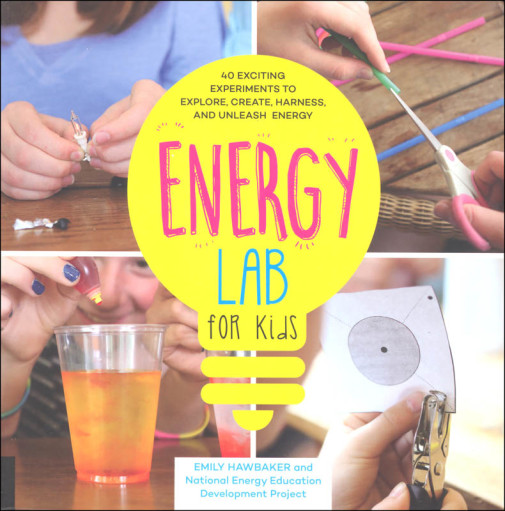We use cookies to make your experience better. To comply with the new e-Privacy directive, we need to ask for your consent to set the cookies. Learn more.
Energy Power Lab for Kids
Five units offer 40 unique labs, covering energy basics, forms of energy, renewable and nonrenewable energy sources, using energy and saving energy. Each lab includes a list of materials, anticipated time, a mess alert, materials list, as well as step-by-step instructions and explanations. Occasional “Now Try This" activities are included with some labs. A sampling of activities includes making a geothermal heater, “drilling" for oil, making a solar cooker and more.
Energy Power Lab for Kids offers 40 discovery-filled and thought-provoking energy projects by Emily Hawbaker, a science educator from the NEED (National Energy Education Development) project—with a foreword by Liz Lee Heinecke, author of Kitchen Science Lab for Kids. Using supplies that you can find around the house or in the grocery store, these exciting projects let you observe, explore, discover, and get energized!
We hear about energy on the news, we use it every day, and sometimes we're told we have too much of it. But what is energy—potential, kinetic, chemical, radiant, and thermal? The lab activities in this book will let you explore almost everything about energy—what it is, how we find it, how we use it, and how we can save it.
Uniting this collection of science experiments for the kitchen, backyard, or classroom is the goal to explore and discover real energy solutions. The chapters cross all categories—from steam, electricity, and chemical reactions, to water, solar, and wind power—allowing kids to compare and test the different sources and to discover their strengths and failings. Why is one source of energy is more efficient for a one situation but not for another? Why might two energy sources combined work better than a single source? Which sources are renewable? Projects are geared to understanding actual issues in the news today. With an emphasis on inventive exploration, you'll discover that creativity leads to breakthroughs.
Learn about:
Take their science curiosity to the next level with Labs for Kids! Each book in the series offers interactive activities for multiple age ranges that use affordable, easily found items. A great way for families to have fun learning together! See individual titles for more information. ~Deanne
| Product Format: | Paperback |
|---|---|
| Brand: | Quarry Books |
| Author: | Emily Hawbacker |
| Grades: | 3-6 |
| ISBN: | 9781631592508 |
| Length in Inches: | 8.5 |
| Width in Inches: | 8.5 |
| Height in Inches: | 0.625 |
| Weight in Pounds: | 0.85 |

